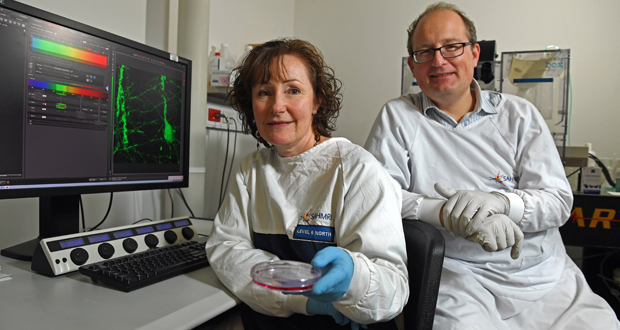Childhood dementia might sound like a misnomer to some but five Australians every year are born with an untreatable form of the disease.
Now, South Australian researchers will use ‘brain in a dish’ technology to improve the lives of those diagnosed with Sanfilippo syndrome. They hope the work might also help others living with more common neurological diseases.
The degenerative condition presents in early childhood following an initial period of normal development.
Over time, those living with the disease experience declining brain function with hyperactive behaviour, sleep disorder, seizures and loss of mobility.
Life-expectancy for children with Sanfilippo is between 12 and 20 years.
The new research will explore whether existing drugs can be rapidly repurposed to help those living with the genetic condition.
To do so, the team will take skin cells from patients, reverse engineer them into stem cells and then develop them into neural cells to create a representation of the person’s brain.
Associate Professor Kim Hemsley from SAHMRI’s Lifelong Health Theme said by using a patient’s own cells, the researchers can create a targeted, personalised treatment plan.
“The other benefit is we can grow a significant number of these ‘brains in dishes’, meaning we can fast-track the testing of a range of drugs that have already been given safety approval for human use," Hemsley said.
Dr Nicholas Smith, from the University of Adelaide and Women’s and Children’s Hospital, said those living with rare diseases are historically underserved from a research perspective, particularly in paediatrics.
SAHMRI, Adelaide’s Women’s and Children’s Hospital and the University of Adelaide partnered with the Sanfilippo Children’s Foundation to secure $2.5 million for the project.
The team secured $2 million from the Federal Government’s Medical Research Future Fund (MRFF) and the Foundation will front a further $500,000 of its own funds.
Do you have an idea for a story?Email [email protected]
 Aged Care Insite Australia's number one aged care news source
Aged Care Insite Australia's number one aged care news source

